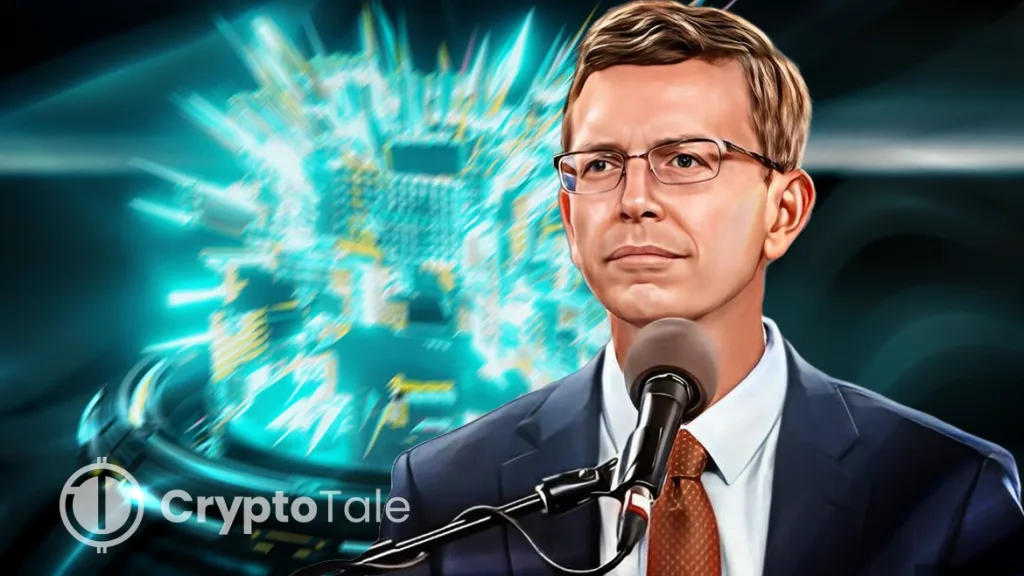Congressman Dusty Johnson Says Blockchain Will Reshape All Industries

- Johnson says blockchain will change every industry just like the internet did before.
- The CLARITY Act gives clear rules that help developers work without legal risks.
- Big names in crypto say the law can help bring more growth and fresh funding soon.
Congressman Dusty Johnson declared that blockchain will transform every major industry, just like the internet did over the past 30 years. He made the statement following the House Financial Services Committee’s approval of the Digital Asset Market Clarity (CLARITY) Act by 294-194. Johnson, a Republican representing South Dakota, said the Act offers the “rules of the road” needed for digital innovation in the U.S. and that without regulatory clarity, blockchain development would keep migrating offshore, leaving the U.S. behind.
CLARITY Act Aims to End Regulatory Confusion
The CLARITY Act, also known as H.R. 3633, introduces a unified regulatory structure for digital assets. It assigns oversight duties to both the Commodity Futures Trading Commission (CFTC) and the Securities and Exchange Commission (SEC). It also outlines disclosure, registration, and compliance standards for exchanges and other blockchain-based projects. The bill defines “mature blockchains” and sets clear guidelines to determine whether a token qualifies as a security or commodity.
Johnson said the legislation gives developers and businesses the structure they need to innovate without fear of legal ambiguity. It fosters domestic investment by ensuring digital assets can grow under predictable rules. The Act covers core areas such as instantaneous settlement, data accuracy, financial access, and cross-border functionality. It aligns with recent executive directives promoting U.S. blockchain leadership.
Bipartisan Support and Industry Backing Fuel Bill Momentum
The CLARITY Act received bipartisan support from lawmakers, including Rep. French Hill, Rep. Glenn “G.T.” Thompson, Rep. Tom Emmer, and Rep. Bryan Steil. Their support demonstrates strong political alignment on the need for digital asset regulation. This cooperation helps push the Act forward while setting the stage for other crypto-related bills under discussion.
Industry leaders, including the Blockchain Association, the Crypto Council for Innovation, and the Chamber of Digital Commerce, praised the act. They stated it represents “meaningful progress toward regulatory certainty” and a key step toward building an innovation-friendly environment. They believe the Act signals that the U.S. intends to lead in blockchain development rather than follow foreign regulatory examples like the EU’s MiCA framework.
Supporters believe the legislation also strengthens blockchain’s application beyond finance. Sectors like healthcare, real estate, public records, voting, and logistics can benefit from blockchain’s decentralized recordkeeping and transparent infrastructure. Real-time inventory tracking, tamper-proof health records, and secure digital IDs are among the solutions advocates expect to flourish under regulatory certainty.
Will Regulation Make or Break U.S. Blockchain Leadership?
While proponents laud the CLARITY Act as a needed framework, skeptics warn that it may serve as an over-regulation, ultimately hindering flexibility in a market that changes and moves quickly. Others maintain that without rules, blockchain will continue to follow a trail overseas to countries with clearer guidance. The Act aims to fill that void, thereby fostering innovation and investment right on U.S. soil, instead of losing out to China or the EU.
With government strategy mapped to clear legislation, the CLARITY Act enables the U.S. to assume leadership over an area still finding its identity. Johnson said that blockchain stands on the verge of becoming the internet for the next 30 years—if lawmakers can find the right structure at the right time.
Disclaimer: The content of this article solely reflects the author's opinion and does not represent the platform in any capacity. This article is not intended to serve as a reference for making investment decisions.
You may also like
Analyst: This Is Why XRP Looks Dead Right Now
MicroStrategy’s Monumental Move: Acquires 223,798 Bitcoin in a $1.9 Billion Bet This Year
Massive $577M ETH Long Position: Bitcoin OG Doubles Down on Ethereum Bet
UK Treasury Finalizes Cryptoasset Rules, Setting 2027 Start Date for Full Oversight
